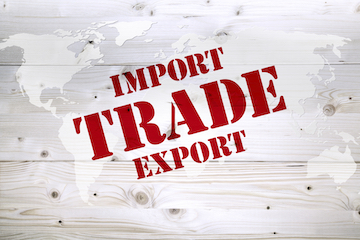Like many online retailers, My Event Décor imports products from China.
President Donald Trump’s recent swathe of tariffs on imported Chinese-manufactured goods, as well as the ongoing and increasingly violent street protests in Hong Kong over perceived Chinese interference, makes me nervous.
To my knowledge, our Australian government hasn’t introduced tariffs to the breadth of products and to the percentage now charged by the American government. But, as loyal defense allies, it may occur.
For the fiscal year ended June 30, 2019, my revenue reversed to 55 percent purchases and 45 percent rentals. It was the opposite a couple of years ago. But despite providing less than half of my revenue, rental décor produced 63 percent of my profit.
President Donald Trump’s recent swathe of tariffs on imported Chinese-manufactured goods … makes me nervous.
Buying items to rent (such as a gold hotel luggage trolley for product launches and television commercials or cordless table lamps for dinners) has increasingly proved profitable. Once an item has made back the initial cost, subsequent rentals are pure profit.
As an unexpected bonus, rentals are also environmentally friendly because clients use only what they need. The same items can be rented repeatedly until they break, crack, split, chip, scuff, or become unusable or unfashionable.
Product strategy
I must evaluate my product strategy, however. Do I occasionally buy for my rental business, which is profitable but time-consuming, or frequently and in larger quantities for my burgeoning purchases range so that customers can receive goods quickly?
The revenue growth from selling decorative homewares, fuelled mainly by Google Shopping advertisements since August 2018, has prompted me to expand offerings around themes, such as vintage, garden, glamour, or destination.
My Event Décor is known for featuring decorative highlights not commonly available in Australia as well as for procuring hard-to-get custom items. Most clients want decorative features to delight their event guests.
But unless the décor piece is a top-seller, I buy only to order. It retains control over inventory and thus cash flow, although would sell more if I had items in stock, ready to ship.
Tariff impact?
Forty-four percent of my suppliers are in Australia and New Zealand. To offer unusual pieces, however, I am forced to search further afield.
I source 25 percent of my products from China via Alibaba, AliExpress, and DHgate. Twenty-three percent of my products are from suppliers in the U.S., and 8 percent are from the U.K.
The three Chinese procurement platforms charge in U.S. dollars, as do the American suppliers, of course. The U.S. dollar has grown increasingly expensive against the Australian dollar with the tariff wars, among other factors.
Some of my popular items have increased in price. One bar cart trolley has risen by US$100 in just 10 months. Do I absorb that extra cost and make less profit or charge a higher price and sell it less often?
I have had limited success in quality and reliability in sourcing products on Alibaba from Indian suppliers. I have yet to source items from Vietnam, Sri Lanka, Thailand, and the Philippines.
But the U.S. tariffs may already be hurting the Chinese. China-based Alibaba suppliers whom I contacted up to three years ago for quotes are back, asking for my business.
I’ve noticed some Chinese Alibaba suppliers are increasingly willing to accept a lower minimum order quantity. Indian manufacturers, interestingly, have not lowered their minimum thresholds.
I would love to have more Australian suppliers to offset rising cross-border prices. However Australian workers are among the highest-paid in the world, which makes it harder to be competitive.
If I reduce my reliance on Chinese and U.S. suppliers, I would need to secure exclusive sourcing with Australian suppliers to prevent those products from becoming readily available or easy to find on Google. Hard-to-find items, after all, are my competitive advantage and unique selling point.







